Your company and the market continuously changes, so do the models reflecting the structure and processes of your company. Often, you need an overview of the changes made in your models. You could compare them manually, but it is easier to use the brand new ARIS “Model Comparison” report, which I want to share with you today.
Model Comparison report
With the ARIS “Model Comparison” report you can generate personalized answers to questions such as:
- Which objects were changed?
- Which object attributes were changed?
- Which relationships were deleted?
- Which relationship attributes were added?
The report executes a model comparison. As input, it takes ARIS diagrams and compares them based on configurable criteria. It produces for you a set of Excel worksheets or HTML tables describing the changes and also, if you wish, a new model which shows you a graphical comparison of the changes. You can start the report on a single model or multiple models.
Benefits of using Model Comparison report
Model comparison gets much easier when using the ARIS Model Comparison report. A configurable user-friendly setup provides you with easy-to-understand information. You get graphics of the compared models (1 to 1) as well as a summary of changes with hyperlinks to the detailed changes described in separate tables. You can decide on which things you want to compare (objects, attributes, etc) and also whether you want to compare occurrences of the same object or copies of objects with the same names or attributes. You can also compare models in different databases.
Report Download & Setup
To get started, download the ARIS Model Comparison report and save it on your hard disk. Please note, you can only download the report if you are currently logged into the ARIS Community.
Make sure that you have ARIS Business Architect, because you need the administration module to import the report. In you only have ARIS Business Designer on your PC, you must ask your ARIS administrator to install the report for you.
For more information about downloading & setting up reports and macros in ARIS, read my previous article “Reports and macros in ARIS”.
After download and installation, you can start the report in the normal way on a selected model or models (right-click and select Evaluate and then Start Report).
Report output
When you start to run the report, the Report Wizard will give you the option of two output formats, HTML or Excel. The HTML output generates a web page with several tables. The summary table (at the bottom of the page) gives an overview of changes with hyperlinks to other tables on the page which show detailed information.
The Excel output provides the same information, but each table is in a separate Excel Worksheet. The summary sheet includes a list of changes and if you click on one of the changes it opens one of the object, attribute or connection comparison worksheets which gives more information about the change.
Whichever format you select will get the option to choose which information you want to see:
- Object occurrences created or deleted
- Attributes of object copies maintained, not maintained or updated
- Connection occurrences created or deleted
- Connection attributes maintained, not maintained or updated
You also have the option to display a graphical output. This creates a new model in ARIS that displays the two models being compared, side by side, and highlights where the changes have been made.
Running the Report
When you run the report you will configure how the comparison information will be displayed.
If you select several models to compare you will be asked to choose which one is reference model against which all the others will be compared. You can also choose whether you want to create the model that has the graphical comparison of the models. If you select this option the report will tell you the names of the models it created (don’t forget to delete them when you no longer want them). If you selected more than two models to be compared, then several comparison models will be produced. Each model will be compared against the reference model in turn.
If you only select one model, a slightly different screen appears. This time you select what type of model to compare against the model you selected. You can choose:
- A variant or master copy
- Models with the same name or other attribute
- Models with the same GUID in another database
The variant, master or attribute comparison can also be done with models in another database if you wish (check the Database box and choose the database). You can only do the GUID comparison with another database.
Next you choose the object comparison options. Normally you will want to look for the existence of new objects in models (or their deletion). If you have definition or variants copies of objects then you can also choose to look for attributes that are newly maintained or updated, either on the objects or their connections (see below). If you click the Restrict Objects Types box then you will get another screen asking you which type of objects you want to include in the comparison. For instance you could search for changes that just affect Applications System Type objects.
Searching for Identical Objects
The final dialog boxes controls how the report searches for identical objects. If you have the same object occurrence in a number of models then its name and attributes will appear the same in each model. Also its GUID (Global Unique Identifier) will be same. If you create a model (for instance an “As-Is” model) and then later make a copy of it (the “To-Be” model) and change some of the attributes of the objects in the “To-Be” model, then the Model Comparison Report can’t tell you which attributes have been changed. This is because as soon as you change an object attribute, it’s changed in all models where the object occurs (e.g. both the “As-Is” or “To-Be”). If instead you make the “To-Be” model a definition or variant copy then it will have different objects even though they initially look the same. If you then change the object attributes in the “To-Be” model, the Model Comparison Report can now find the changes.
Of course you might change the name of the “To-Be” objects so have to tell the report how to spot the objects to compare.
Use the GUID setting for comparing occurrence copies (you can’t do attribute comparison with this option).
Use the identical attribute option where you have definition or variant copies. You can use the name attribute if you haven’t changed the name. If you changed the name you will need to choose some other attribute that hasn’t changed (maybe a reference number). Now you can compare attributes and see those that are maintained or changed.
Table output with attribute changes in definition copies:
Note: Check this post if you are looking for other free ARIS reports & macros. If you want to discuss ARIS scripting problems, make sure to join the group Reports & Macros in ARIS.


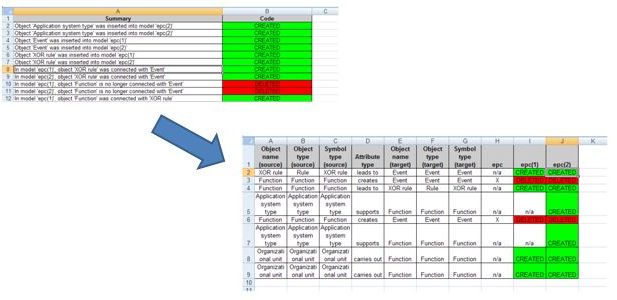

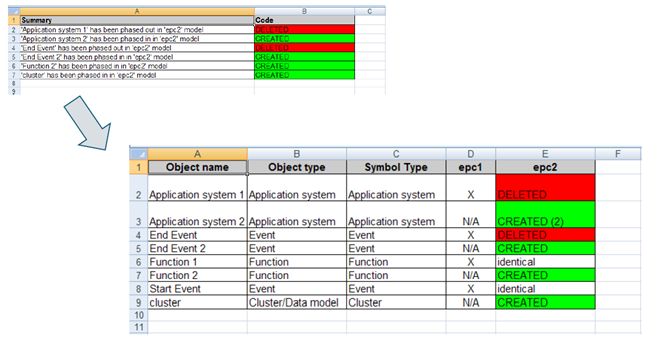


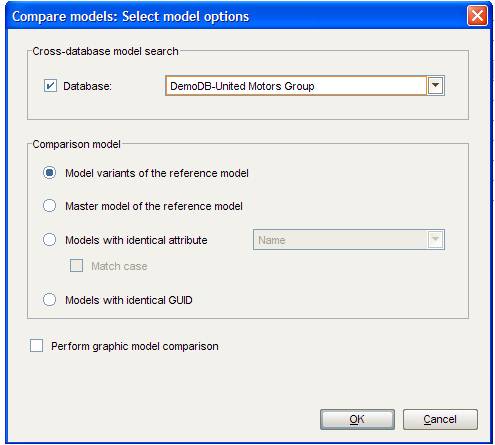

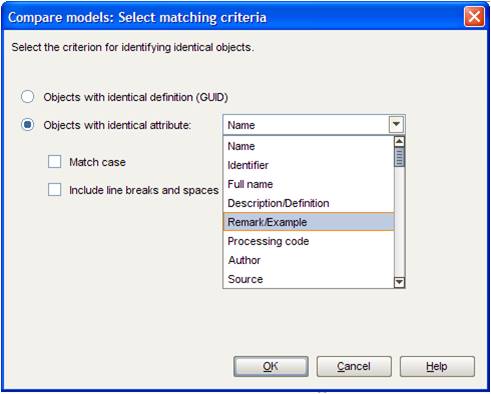
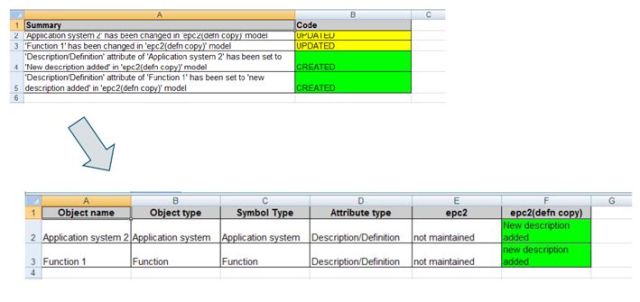







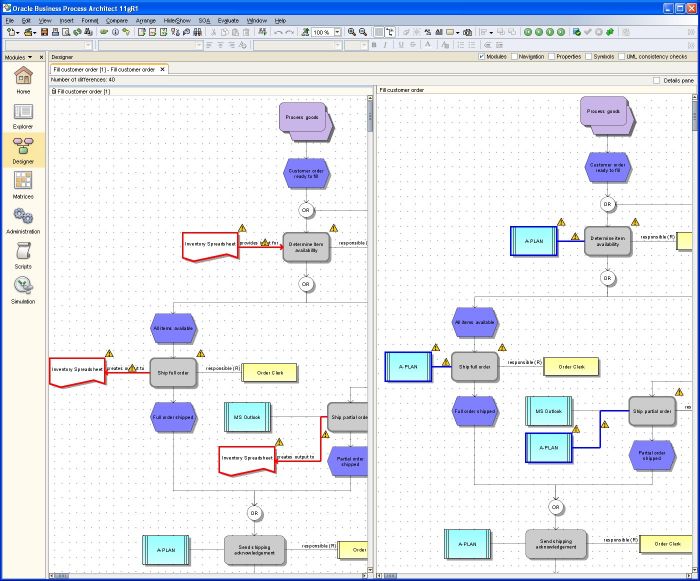

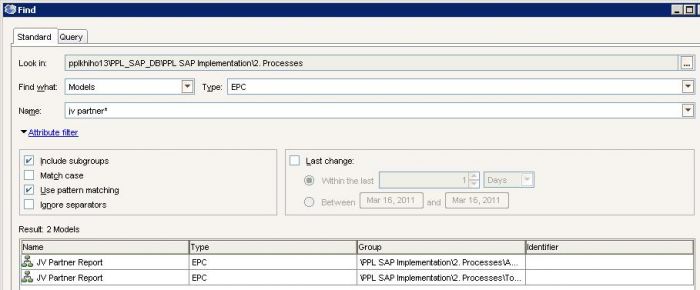
.JPG)





.jpg)

Rick Bosworth on
Rob,
This looks like a fantastic addition to the ARIS functionality, I can't wait to start playing with it. Thanks for the great write up Rob.
Rick